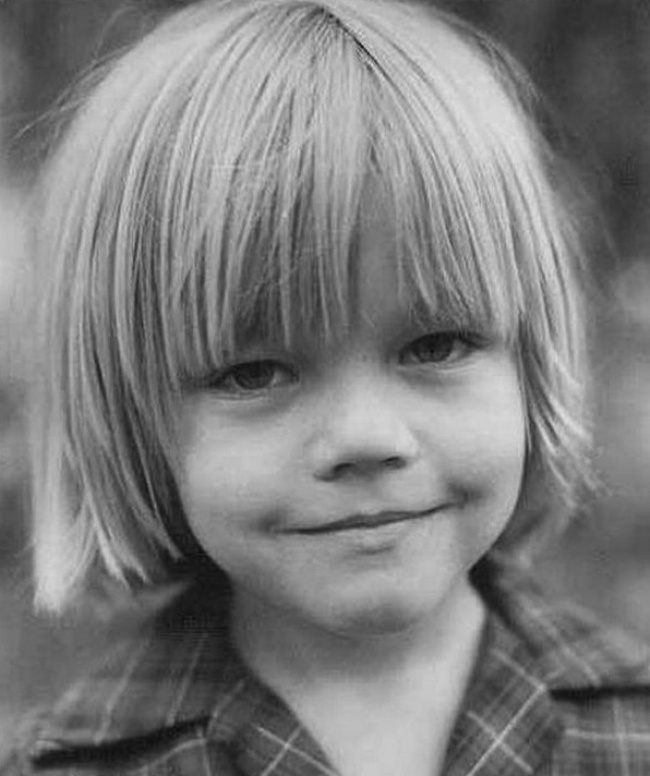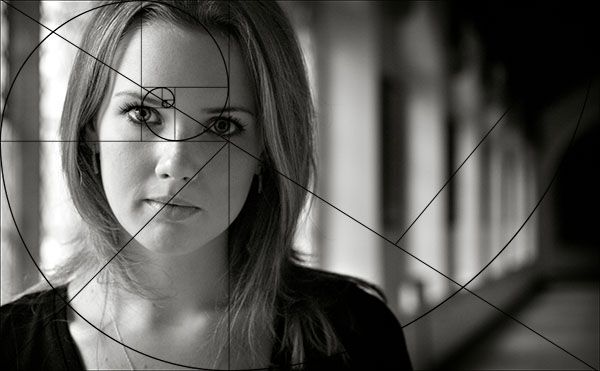Parts of a canon
Canon Printer Parts by Model
HomePrinter Copier MFP PartsBy Brands
Laser Black and White
Canon BX
Canon FC220
Canon JX
Canon KX
Canon Laser CLASS 650i
Canon Laser CLASS 810
Canon Laser CLASS 830i
Canon NP6020
Canon NP6260
Canon PC-1060
Canon PC-1061
Canon PC-1080F
Canon imageCLASS D1120
Canon imageCLASS D1150
Canon imageCLASS D1170
Canon imageCLASS D1180
Canon imageCLASS D1320
Canon imageCLASS D1350
Canon imageCLASS D1370
Canon imageCLASS D1520
Canon imageCLASS D1550
Canon imageCLASS D660
Canon imageCLASS D661
Canon imageCLASS D680
Canon imageCLASS D760
Canon imageCLASS D761
Canon imageCLASS D780
Canon imageCLASS LBP251
Canon imageCLASS LBP253
Canon imageCLASS LBP6670
Canon imageCLASS MF414
Canon imageCLASS MF416
Canon imageCLASS MF419
Canon imageCLASS MF5850
Canon imageCLASS MF5880
Canon imageCLASS MF5950
Canon imageCLASS MF5960
Canon imageCLASS MF6160
Canon imageCLASS MF6180
Canon imageCLASS MF6530
Canon imageCLASS MF6531
Canon imageCLASS MF6540.
Canon imageCLASS MF6550
Canon imageCLASS MF6560
Canon imageCLASS MF6580
Canon imageCLASS MF6590
Canon imageCLASS MF6595
Canon imageRUNNER 1023
Canon imageRUNNER 1025
Canon imageRUNNER 1310
Canon imageRUNNER 1330
Canon imageRUNNER 1370
Canon imageRUNNER 1600
Canon imageRUNNER 1730
Canon imageRUNNER 1740
Canon imageRUNNER 1750
Canon imageRUNNER 2016
Canon imageRUNNER 2018
Canon imageRUNNER 2020
Canon imageRUNNER 2022
Canon imageRUNNER 2025
Canon imageRUNNER 2030
Canon imageRUNNER 2200
Canon imageRUNNER 2230
Canon imageRUNNER 2270
Canon imageRUNNER 2318
Canon imageRUNNER 2520
Canon imageRUNNER 2525
Canon imageRUNNER 2530
Canon imageRUNNER 2535
Canon imageRUNNER 2545
Canon imageRUNNER 2800
Canon imageRUNNER 2830
Canon imageRUNNER 2870
Canon imageRUNNER 3025
Canon imageRUNNER 3030
Canon imageRUNNER 3035
Canon imageRUNNER 3045
Canon imageRUNNER 3225
Canon imageRUNNER 3230
Canon imageRUNNER 3235
Canon imageRUNNER 3245
Canon imageRUNNER 3300
Canon imageRUNNER 3320
Canon imageRUNNER 3530
Canon imageRUNNER 3570
Canon imageRUNNER 4530
Canon imageRUNNER 4570
Canon imageRUNNER 5000
Canon imageRUNNER 5050
Canon imageRUNNER 5055
Canon imageRUNNER 5065
Canon imageRUNNER 5070
Canon imageRUNNER 5075
Canon imageRUNNER 5570
Canon imageRUNNER 6000
Canon imageRUNNER 6570
Canon imageRUNNER Advance 400iF
Canon imageRUNNER Advance 4025
Canon imageRUNNER Advance 4035
Canon imageRUNNER Advance 4045
Canon imageRUNNER Advance 4051
Canon imageRUNNER Advance 4225
Canon imageRUNNER Advance 4235
Canon imageRUNNER Advance 4245
Canon imageRUNNER Advance 4251
Canon imageRUNNER Advance 4525i
Canon imageRUNNER Advance 4535i
Canon imageRUNNER Advance 4545i
Canon imageRUNNER Advance 4551i
Canon imageRUNNER Advance 500iF
Canon imageRUNNER Advance 6055
Canon imageRUNNER Advance 6065
Canon imageRUNNER Advance 6075
Canon imageRUNNER Advance 6255
Canon imageRUNNER Advance 6265
Canon imageRUNNER Advance 6275
Canon imageRUNNER Advance 8085
Canon imageRUNNER Advance 8095
Canon imageRUNNER Advance 8105
Canon imageRUNNER Advance 8205
Canon imageRUNNER Advance 8285
Canon imageRUNNER Advance 8295
Canon imageRUNNER LBP3470
Canon imageRUNNER LBP3480
Laser Color
Canon imageCLASS LBP654Cdw
Canon imageCLASS MF731Cdw
Canon imageCLASS MF733Cdw
Canon imageCLASS MF735Cdw
Canon imageCLASS MF741Cdw
Canon imageCLASS MF743Cdw
Canon imageCLASS MF745Cdw
Canon imageCLASS MF746Cdw
Canon imageRUNNER Advance C2020
Canon imageRUNNER Advance C2030
Canon imageRUNNER Advance C2225
Canon imageRUNNER Advance C2230
Canon imageRUNNER Advance C3320
Canon imageRUNNER Advance C3325
Canon imageRUNNER Advance C3330
Canon imageRUNNER Advance C3525
Canon imageRUNNER Advance C3530
Canon imageRUNNER Advance C5030
Canon imageRUNNER Advance C5035
Canon imageRUNNER Advance C5045
Canon imageRUNNER Advance C5051
Canon imageRUNNER Advance C5235
Canon imageRUNNER Advance C5240
Canon imageRUNNER Advance C5250
Canon imageRUNNER Advance C5255
Canon imageRUNNER Advance C7055
Canon imageRUNNER Advance C7065
Canon imageRUNNER Advance C7260
Canon imageRUNNER Advance C7270
Canon imageRUNNER Advance C9065
Canon imageRUNNER Advance C9075
Canon imageRUNNER Advance C9270
Canon imageRUNNER Advance C9280
Canon imageRUNNER C2550
Canon imageRUNNER C2620
Canon imageRUNNER C2880
Canon imageRUNNER C3080
Canon imageRUNNER C3100
Canon imageRUNNER C3170
Canon imageRUNNER C3200
Canon imageRUNNER C3220
Canon imageRUNNER C3380
Canon imageRUNNER C3480
Canon imageRUNNER C4080
Canon imageRUNNER C4580
Canon imageRUNNER C5180
Canon imageRUNNER C5185
Other Printers
Canon Canon-Misc
Canon Toner, Canon Supplies and Canon Parts
|
Customer Reviews 100% Guaranteed! Free Shipping! Last Chance Corner Se Habla Español Precision Answers Precision Printables Cross-Reference Guide Toner Buying Guide Canon Print Head FAQ Glossary Instruction Manuals |
Find your model:
Precision Roller carries an extensive line of Canon printer toner cartridges, copier toner cartridges, fax toner cartridges, imaging units, drums, supplies, and parts;
both Genuine Canon Brand and Generic Compatible Brand Canon parts, copier toner cartridges, printer toner cartridges, fax toner cartridges, imaging units,
drums and supplies at an attractive price. If you can’t find the item you are looking for, please feel free to call us at (800) 323-9523 from 8:00 am to 4:30 pm Mountain Standard Time. Our friendly customer service agents will be happy to search our extended in-house database and help you with your Canon questions and needs.
Disclaimer: | |||||||
©2003-2022 Precision Roller. • 2102 West Quail Avenue, Suite 1 • Phoenix, AZ 85027 • (800) 323-9523 / (623) 581-3330 • M-F 8:00am - 4:30pm MST (noDST)
• 2102 West Quail Avenue, Suite 1 • Phoenix, AZ 85027 • (800) 323-9523 / (623) 581-3330 • M-F 8:00am - 4:30pm MST (noDST)
Individual brands are copyrighted by their respective owners. Precision Roller is in no way affiliated, sponsored or endorsed by these copyright owners or their affiliates or dealers
This website uses a secure server to encrypt all sensitive information.
Questions? Concerns? Send us a note at [email protected]
According to the pages of the Great Canon of Andrew of Crete. Great Lent
On the weekdays of Great Lent and on the days of Small Lent, when the service is celebrated from Hallelujah , as well as on those days of the year when Vespers is served in the afternoon (for example, Christmas and Epiphany Eve), the Charter appoints celebration of the great supper.
On the first four days of Great Lent, Great Compline is served with the reading of the canon of St. Andrew of Crete, and it is divided into four parts. nine0007
Andrew of Crete, and it is divided into four parts. nine0007
photosight.ru. Photo: Rostislav Rositsky
The rite of Great Compline consists mainly of psalms and is divided into three parts. The first part includes six psalms and a bright hymn God is with us from the book of the prophet Isaiah. The second part also includes psalms and a prayer of King Manasseh taken from 2 Chronicles. The third part includes psalms and a doxology, after which the Theotokos canon is sung and a special hymn “Lord of strength, be with us ...” with verses of 150 psalms. The charter specifies to sing them "well-spoken and inertly", i.e. very loud and slow. nine0008
On the first four days of Great Lent at Great Compline, canon of Andrew of Crete is appointed, but not in the final part, but in the very first.
The service begins like this: “Blessed be God…”, the usual beginning and Psalm 69, which is in the third part of Great Compline, but on these four days it is transferred to the beginning, and then it is no longer repeated in its usual place. After Psalm 69, the reading of the canon of St. Andrew of Crete .
After Psalm 69, the reading of the canon of St. Andrew of Crete .
Great Canon is the miracle of all church hymnography, these are texts of amazing power and beauty. It begins with a text addressed to Christ:
“Where shall I start weeping for my accursed life of deeds? How shall I begin, O Christ, the present weeping?” - where should I start to repent, because it is so difficult.
Then follows the famous troparion:
“Come, wretched soul, with thy flesh. Confess to the builder of all…”
Surprising words, here both Christian anthropology and asceticism: the flesh must also participate in repentance, as an integral part of human nature. nine0008
In its content the Great Canon is a conversation of a penitent with his own soul, and from the very first words an appeal to his soul follows:
bring tears to God in repentance.
This conversation with the soul, its constant persuasion, calls to repentance, reaches its climax in the kontakion, which is sung after the 6th song:
“My soul, my soul, wake up, why are you sleeping? The end is approaching, and if you be embarrassed, rise up, may Christ God have mercy on you, who is everywhere and fulfills everything. nine0008
nine0008
The main features of the Great Canon are the very wide use of images and plots from Holy Scripture, both Old and New Testaments. On these examples, the soul is constantly being exhorted: remember this righteous man, he pleased God so much, remember this righteous man, he pleased him so much - you did nothing of the kind.
In the very first troparia Adam and Eve are remembered, a great number of biblical characters are remembered: Moses, Aaron, Abraham, Joseph. Some are spoken about in a positive sense, others in a negative sense, someone needs to be imitated, but someone does not. nine0008
“The charioteer Elijah, in a chariot of virtues, entered as if into Heaven, sometimes roaming above the earthly ones. For this, my soul, think of the sunrise.” Think, my soul, about the ascent of the Old Testament righteous.
“You imitated Gihazi, you cursed mind, always a bad mind, the soul, whose love of money you put away for old age, run away from the fire of Gehenna, retreating from your evil ones” - at least in old age, reject the love of money of Gehazi, soul, and leaving your atrocities, avoid the fire of hell.
As you can see, the texts are rather difficult, so it is necessary to prepare in advance for the perception of the Great Canon. nine0008
In the final song of the first day, after all the reminiscences, troparia of amazing power follow:
“The law is exhausted, the Gospel is celebrated, but all the scriptures in you are careless, the prophets are exhausted, and all the righteous word: your scabs, O soul, multiplying not existing to the doctor who heals you” — there is nothing to remember from the Old Testament, everything is useless.
I will give you examples from the New Testament, maybe then you will repent: “I bring you new scriptures of instructions, leading you, soul, to tenderness: be jealous of the righteous, but turn away sinners, and propitiate Christ with prayers and forgiveness and purity and persecution." nine0008
The most terrible sinners have repented and will come to the Kingdom of Heaven before you: “Christ became human, calling to repentance robbers and harlots: repent, soul, the door of the Kingdom is already open, and the Pharisees and publican and adulterer repentant anticipate it. ”
”
The Great Canon, moving us to repentance by all means, in the last troparia, as it were, reveals its “methodology” to us: in vain: “even though you were not jealous of your soul, neither deed nor life: but woe to you, when you will be judged” - woe to you when you appear in judgment! nine0008
At the end of Great Compline there is an rite of forgiveness, similar to the one that was performed on the week of the evening. It is indicated after the last prayers of Great Compline:
“The primate bows to the earth, saying to the brethren: bless the holy fathers, forgive me the sinner, if I have sinned in word, deed and all my feelings.” Brethren: "God will forgive you, holy father."
Thus the divine service of the first week introduces us to Great Lent, educates, inspires, exhorts us, directing us to the feat of fasting. nine0008
"Liturgy: A Course of Lectures". M.S. Krasovitskaya. M., 1999. 2004
Andrew of Crete
Prayer of St. Ephraim the Syrian
Ephraim the Syrian
Unction. The Sacrament of the Unction
About the Liturgy of the Presanctified Gifts
About Repentance and Communion
Teachings on the Days of Great Lent
Lenten Recipes
Since you are here...
We have a small request. This story was told thanks to the support of readers. Even the smallest monthly donation helps editorial work and create important content for people.
Your help is needed now more than ever.
Penitential canon - Translations, executions, interpretations | Tradition.ru
- home
- media library nine0112
- Subject: Great Penitential Canon of St. Andrew of Crete
User Agreement Report a bug
nine0110 Andrew of Crete, meditate, learn to understand"
Andrew of Crete, meditate, learn to understand"
The Penitential Canon is divided into four parts and is read at Great Compline, in the evening, on the first four days of Lent. It is also read in full on the Thursday before the week of Mary of Egypt.
The penitential canon can be described as penitential lamentation, revealing to us the whole immensity, the whole abyss of sin, shaking the soul with despair, repentance and hope. With exceptional art, St. Andrew intertwines the great biblical images - Adam and Eve, paradise and the fall, Patriarch Noah and the Flood, David, the Promised Land and above all Christ and the Church - with confession of sins and repentance. The events of sacred history are revealed as the events of my life, the deeds of God in the past, as matters concerning me and my salvation, the tragedy of sin and betrayal, as my personal tragedy. My life is shown to me as part of that great, all-encompassing struggle between God and the powers of darkness that rise up against Him. nine0008
nine0008
The penitential canon again and again about the spiritual history of the world, which at the same time is the history of my soul. The words of the Canon call me to account, for they speak of events and deeds of the past, the meaning and power of which are eternal, since each human soul - one and only - passes through the same path of trials, faces the same choice, meets the same higher and
essential reality. The examples from Scripture are not merely "allegories" as many people think, who therefore feel that the Great Canon is overburdened with names and incidents that do not belong to them. Such people ask why talk about Cain and Abel, about Solomon and David, when it would be easier to say: "I have sinned"? They do not understand that the very concept of the word sin in biblical and Christian tradition has a depth and richness that "modern man" simply cannot understand, and that therefore his confession of his sins is profoundly different from real Christian repentance. Indeed, the culture in which we live and which forms our modern views, in essence, simply excludes the concept of sin. Because sin is, first of all, the fall of a person from an immeasurable spiritual height, his refusal from his “high calling”. But what significance can this have for a culture that does not know and denies this “spiritual height”, this “calling” and evaluates a person not “from above”, but “from below” - for a culture that, if it does not openly deny God, then in fact, everything, from top to bottom, is materialistic and therefore considers a person's life only from the point of view of material well-being, without recognizing his high, transcendental calling? It regards sin chiefly as a natural "weakness" derived primarily from social disorder and therefore corrected by better social and economic organization. Therefore, modern man, even if he confesses his sins, no longer repents of them. Depending on this or that understanding of his “religious duties”, he either formally enumerates his sins and violations of ritual rules, or he talks with the confessor about his “problems”, expecting some kind of therapy from religion, a treatment that will return him happiness and calm.
Indeed, the culture in which we live and which forms our modern views, in essence, simply excludes the concept of sin. Because sin is, first of all, the fall of a person from an immeasurable spiritual height, his refusal from his “high calling”. But what significance can this have for a culture that does not know and denies this “spiritual height”, this “calling” and evaluates a person not “from above”, but “from below” - for a culture that, if it does not openly deny God, then in fact, everything, from top to bottom, is materialistic and therefore considers a person's life only from the point of view of material well-being, without recognizing his high, transcendental calling? It regards sin chiefly as a natural "weakness" derived primarily from social disorder and therefore corrected by better social and economic organization. Therefore, modern man, even if he confesses his sins, no longer repents of them. Depending on this or that understanding of his “religious duties”, he either formally enumerates his sins and violations of ritual rules, or he talks with the confessor about his “problems”, expecting some kind of therapy from religion, a treatment that will return him happiness and calm. In neither case do we see the remorse, the shock of a man who, seeing himself as an image of ineffable glory, realizes that he has betrayed this "image", has stained and rejected it with his life; there is no repentance as sadness about sin, coming from the very depths of human consciousness, as a desire to return, as a surrender to God's mercy and love. That's why it's not enough to just say, "I have sinned." These words acquire their true meaning and effectiveness only when sin is perceived and experienced in all its depth and sorrow. nine0008
In neither case do we see the remorse, the shock of a man who, seeing himself as an image of ineffable glory, realizes that he has betrayed this "image", has stained and rejected it with his life; there is no repentance as sadness about sin, coming from the very depths of human consciousness, as a desire to return, as a surrender to God's mercy and love. That's why it's not enough to just say, "I have sinned." These words acquire their true meaning and effectiveness only when sin is perceived and experienced in all its depth and sorrow. nine0008
The meaning and purpose of the Great Canon lies precisely in this, to reveal sin to us and thereby lead us to repentance. But he shows us sin not by definitions and enumerations, but by a kind of deep contemplation of biblical history, which is truly the history of sin, repentance and forgiveness. This contemplation introduces us to a completely different spiritual culture, calls us to accept a completely different understanding of a person, his life, his goals, his spiritual "motivations". The Canon restores in us that spiritual attitude within which repentance becomes possible again. nine0008
The Canon restores in us that spiritual attitude within which repentance becomes possible again. nine0008
Alexander Schmemann "Lent"
About Andrew of Crete and his Penitential Canon
Brief comment
Brief commentaryRead our brief commentary on each song of the Canon: main ideas, interpretation of numerous biblical references:
G. Florovsky "Songwriters"
G. Florovsky "Songwriters"
We also know little about the life of the great Byzantine songwriter, St.
Andrew of Crete, and also only from the meenia. Theophanes the chronicler names Andrew of Crete among the members of the council of 712, which rejected the acts of the 6th Ecumenical Council, under pressure from imp. Philippic. This was an act of unworthy compliance (or “economia”), but not apostasy… St. Andrew was originally from Damascus, labored in the monastery of St. Sava, and later was a deacon of the Great Church. It is difficult to determine exactly when he was appointed Bishop of Crete. Apparently, he lived to see the beginning of the iconoclastic disputes (a word in defense of the holy icons has been preserved) ... The Monk Andrew was a preacher and a hymnographer. Apparently, he was the first compiler of the canons (the three hymns with the name of Sophronius probably belong to the Monk Joseph the Songmaker, already in the 9th century). Most of the canons of St. Andrew fell into disuse very early. The most remarkable work of St. Andrew is, of course, the Great Canon - we know it in the later processing of the Studites, irmos and troparia of St.
Mary of Egypt do not belong to Andrew. Rather, it is a kind of penitential autobiography. Hence the upsurge and tension of personal feeling that pervades this poem of a contrite soul... St. Andrew is characterized by his biblicalism. Sometimes he almost literally repeats biblical texts. The Great Canon is filled with biblical memories. There is a long string of vivid repentant images from the Bible, from Adam to the prudent thief. The Biblical text is very often perceived allegorically, but this is moral, not speculative allegorism... St. Andrew's dogmatic motives are little expressed. Repentant lyrics predominate ... It should also be noted his three odes in the first days of Passion Week (now sung at Compline), on Cheesefare Wednesday, at Compline of the week of Vaii, full canons on the Resurrection of Lazarus, on the week of the myrrh-bearing wives, on the middle of Pentecost, on the day of the Nativity of the Virgin, and a series of “self-consistent…”
As a liturgical form, the canon was further developed and completed in the work of Damaskinos and Cosmas, Bishop of Mayum (it must be distinguished from another Kosmas hymnographer, who was his mentor and Damascus, but it is almost impossible to distinguish between the works of two authors of the same name).
In the 8th century Stefan Savvait composed the canons. The iconoclastic turmoil also had a painful effect on the history of liturgical singing.
Read more
nine0002
S. Averintsev "The Birth of Rhyme from the Spirit of Greek "Dialectics""
S. Averintsev "The Birth of Rhyme from the Spirit of Greek "Dialectic""
Descendants reacted to Roman's legacy in an unusual way. They canonized him and gave his name the honorary title of Sweetsinger, they told legends about him; but they did not leave any of his poems in church use. Where he preceded the story with a meditation on its meaning, they cut off the story and left the meditation. The time for pictorial narratives and dramatic scenes is over; the time has come for contemplation and praise.
The genre form of the kontakion is supplanted by the genre form of the canon. The classic of the latter was Andrei of Crete. He wrote the "Great Canon", where images of the Old and New Testaments pass in an endless series, reduced to the simplest semantic schemes. For example, Eve is no longer Eve: it is a feminine and evil beginning inside the very soul of every person:
Instead of sensual Eve, mental Eve is with me -
Passionate thoughts in my flesh...
So, in fact, Roman could also say; but with him it would be a fable "moral" to the story. Andrew of Crete is not interested in narration, he is interested in "morality". The entire "Great Canon" is, as it were, a collection of "morals" to dozens of "fables" missing from it. The concreteness of the "sacred history" ceases to be a symbol and becomes nothing more than an allegory. nine0008
Church poets of subsequent centuries - John of Damascus and Cosmas of Mayum, Joseph the Song-singer and Theophanes the Inscribed, and others, and others - these are not the heirs of Roman; these are the successors of the tradition of Andrey.
The structure of the canon assumes that each of its nine "songs" in its verbal and figurative composition is correlated with one of the biblical moments (the first - with the passage through the Red Sea, the second - with the formidable sermon of Moses in the desert, the third - with the thanksgiving of Anna, who gave birth to Samuel , the fourth - with the prophecy of Habakkuk, etc., without any digression). This means that in the Christmas canon the first ode takes on the theme of Christmas, so to speak, in the mode of crossing the Red Sea:
You redeemed Your people of old, O Lord,
With a miraculous hand, pacifying the abyss;
But so is the way to paradise now
You open, Virgin born into the world,
Although man is wholly, but wholly God.
An event ceases to be an event and turns into a mode for one and the same, all the time one and the same meaning. The victory of the canon over the kontakion is the victory of the "Alexandrian" tendency over the "Antiochian" one.
nine0008
Read more
Ignatius (Petrovskaya) "The Place of the Great Canon of St. Andrew of Crete and His Other Works in the Songwriting Heritage of the Church"
Ignatius (Petrovskaya) “The Place of the Great Canon of St. Andrew of Crete and His Other Works in the Songwriting Heritage of the Church”
Liturgical theology and works of church hymnographers.
Life path of St. Andrew of Crete.
Creations of St. Andrew.
Great penitential canon: its history and features.
Building of the Great Canon.
Figurative structure of the Great Penitential Canon.
The Great Canon is a guide to spiritual ascent.
nine0002 Theological Truths in the Great Penitential Canon.
Other creations of St. Andrew for the period of Fortecost.
Creations of St. Andrew of the Paschal cycle.
The Menaion Canons of St. Andrew.
Personality of St. Andrew of Crete
Read article
Vissarion (Nechaev) "Lessons of repentance according to biblical legends" nine0157
Vissarion (Nechaev) "Lessons of repentance according to biblical legends"
The Great Canon belongs to the category of penitential church hymns. It is all aimed at awakening the soul from sinful slumber, revealing to it how pernicious the sinful state is, disposing it to strict self-examination, self-condemnation and repentance, moving it to aversion from sins and to the correction of life. To this end, the creator of the canon brings to the memory of the sinner faces, deeds and events from the Old Testament history, starting with the creation of Adam, and from the gospel, and applying the legends about them to the moral state and needs of the soul, extracts from these legends denunciations, threats, consolations, warnings and instructions.
nine0008
The application of biblical tales to the moral state and needs of the soul is expressed in the Great Canon for the most part so concisely that it is not always suddenly and easily possible to understand what the correspondence of one to another consists in. This opens up the need for an explanation of what exactly this correspondence should be seen in, how to understand certain expressions that contain a comparison of objects that apparently do not have a similarity, or represent a remote similarity. Taking upon ourselves the work of this explanation, we wish to give it a conversational character, having in mind not only to satisfy curiosity through the disclosure of the meaning of incomprehensible things, but mainly to promote a repentant and prayerful mood of the soul through spiritually edifying reflections, introducing into the spirit of the great creation of the Cretan saint. In the types of edification, we will also focus on those places in which biblical events are applied so clearly that explaining their relationship to the soul does not present any particular difficulty.
nine0008
Read more
Veniamin (Milov) “Church-liturgical edification according to the “Great Canon” of St. Andrew, Archbishop of Crete"
Veniamin (Milov) “Church-liturgical edification according to the “Great Canon” of St. Andrew, Archbishop of Crete"
General ascetic ideas of the Great Canon.
Forgiveness of sinners by the Triune God for the sake of the Son of God the Savior and prayers to the Mother of God.
Motivation of the sinner to repentance by the facts of the Biblical history.
The value of the teaching of the Church according to the "Great Canon".
Read more
Cyprian (Kern) "Liturgy.
 Hymnography and Eorthology» nine0157 Cyprian (Kern) "Liturgy. Hymnography and eorthology»
Hymnography and Eorthology» nine0157 Cyprian (Kern) "Liturgy. Hymnography and eorthology»
The first who began to compose the canons was St. Andrew of Crete. Before him, or there were no complete canons at all, but only individual songs, the 8th and 9th, necessarily, and some other; and the very writing of the song of the canon, as a development and addition to the biblical odes, was not known to the Church. In any case, St. Andrew of Crete has the honor of inventing a new image of church poetry and, I must say, he is the most remarkable in terms of content and ability to apply the forms of the canon to this content. nine0008
Read more
M. Krasovitskaya "Liturgy"
M. Krasovitskaya "Liturgy"
Krasovitskaya "Liturgy"
The Great Canon is the miracle of all church hymnography, these are texts of amazing power and beauty.
Read more
The Great Canon of St. Andrew of Crete with a parallel translation into Russian and explanations to the text
The Great Canon of St. Andrew of Crete with a parallel translation into Russian and explanations to the textThe Great Canon of St. Andrew of Crete with a parallel translation into Russian and explanations of the text. Life of Mary of Egypt. Gospels of the Holy Passion of Christ. Parimias of Holy Saturday. nine0008
St. Andrew of Crete gives many examples of piety and sin from Sacred History, which cannot be understood without knowing the Scriptures deeply.
In the explanatory texts, each example or name mentioned in the canon is explained in an accessible way, which reveals the hidden meanings of this prayer reading. The text contains references to the Bible.
Read or download book
Great supper. Canon of Andrew of Crete
Great supper. Canon of Andrew of Crete
This film prepares the viewer for the perception of the Great Canon of Penitence: tells about its creator, rites and symbols, about the features of its commission in the Kiev-Pechersk Lavra. Titles give Russian translation of all irmos, refrains and some troparia. nine0008
Watch movie
Translations of the Penitential Canon
Translations of the Penitential Canon
Translations of Penitential Canon
The Great Canon of St.
Andrew of Crete with a parallel translation into Russian (Kedrov) and explanations to the text
Executions of the Penitential Canon
Executions of the Penitential Canon
Executions of the Penitential CanonThe Great Penitential Canon of St. Andrew of Crete in audio performance. First comes the Church Slavonic text, then the Russian translation. Numerous biblical references in the Canon are accompanied by readings of the relevant biblical passages.
The first part of the Canon, read on Monday of the first week of Great Lent, performed by the Choir of the Kiev-Pechersk Lavra.
The first part of the canon read on Monday of the first week of Great Lent.
It is sung in a singsong voice with two faces with the canonarch. Choir of the Holy Trinity Ioninsky Monastery. nine0008
Penitential canon in the reading of Patriarch Pimen.
Penitential canon in the reading of the Moscow Sretensky Monastery.
Penitential canon, for choir. Estonian Philharmonic Choir. Composer - Arvo Pärt
Lecture "We read the Canon of St. Andrew of Crete, meditate, learn to understand"
One of the characteristic features of Great Lent is a very special service, unforgettable prayers and hymns that renew a person's striving for God, awaken in him the memory of the Heavenly Fatherland. nine0008
A special place among these texts is occupied by the Great Penitential Canon of Andrew of Crete, which is sung (or chanted?) from Monday to Thursday during the first week of Lent. This is a very long prayerful reflection - the search for a lost, like a biblical coin, living heart - and a place in it for the Living God.
 All of our products are protected by the Precision Roller 100% 1 Full Year Satisfaction Guarantee.
All of our products are protected by the Precision Roller 100% 1 Full Year Satisfaction Guarantee.










